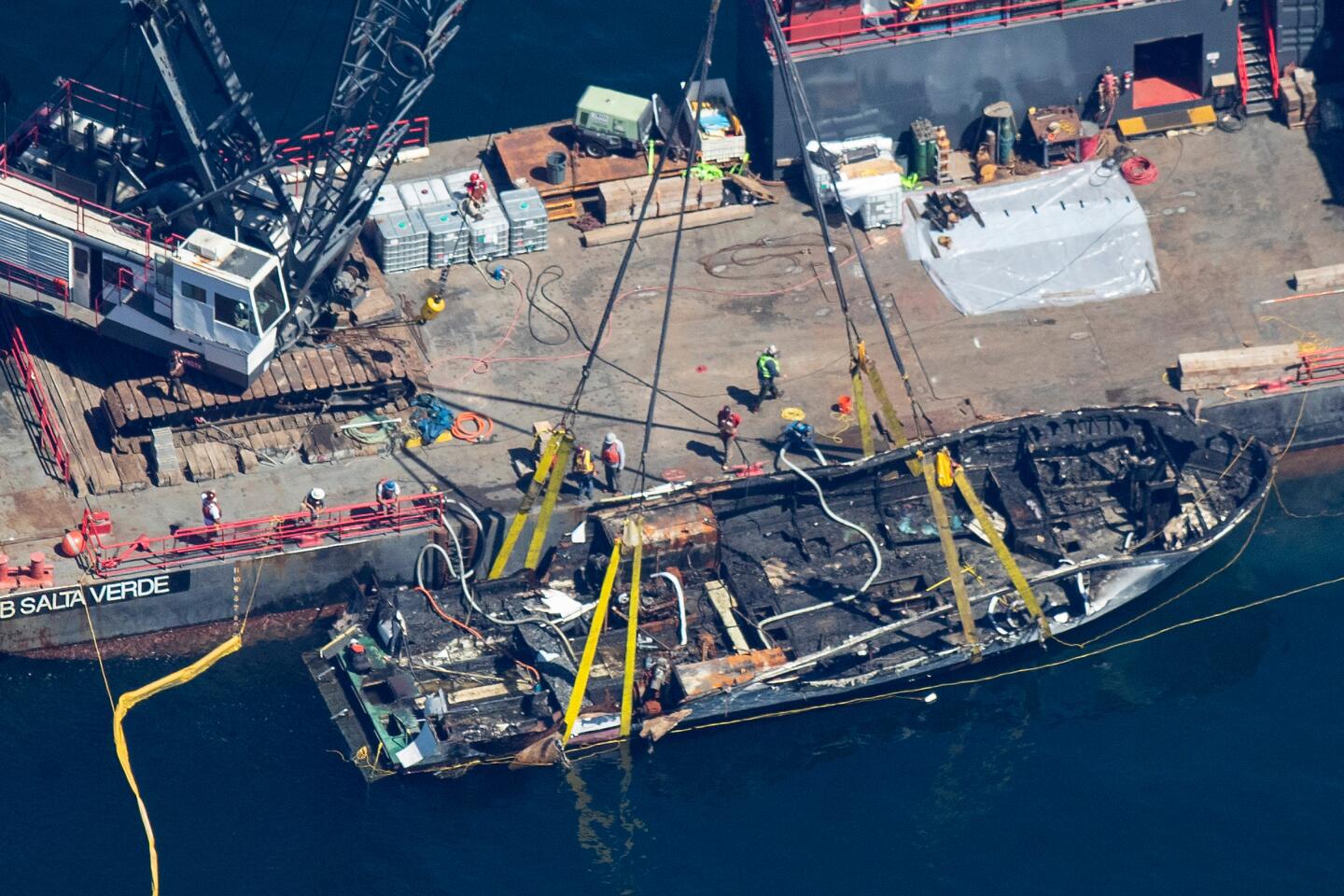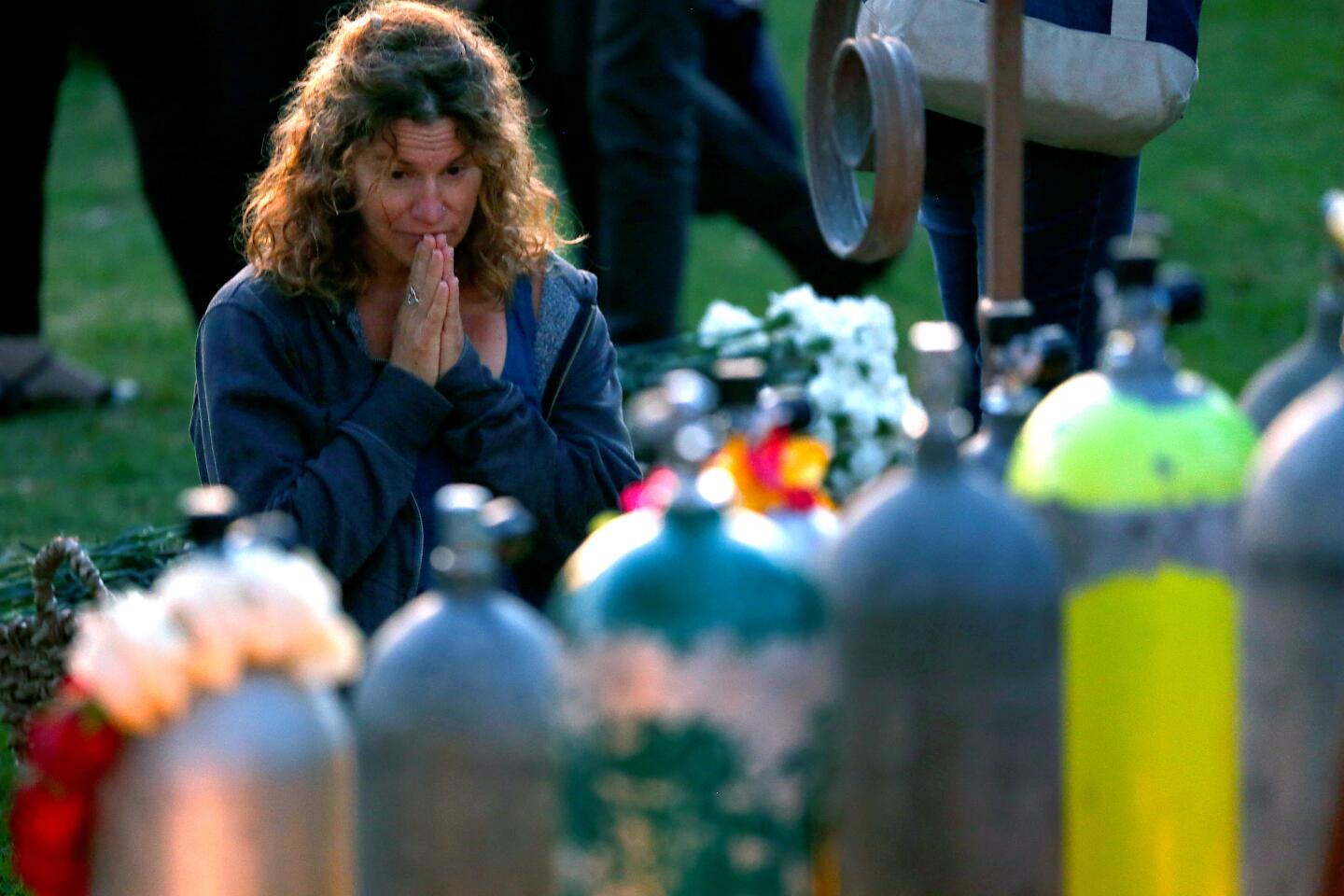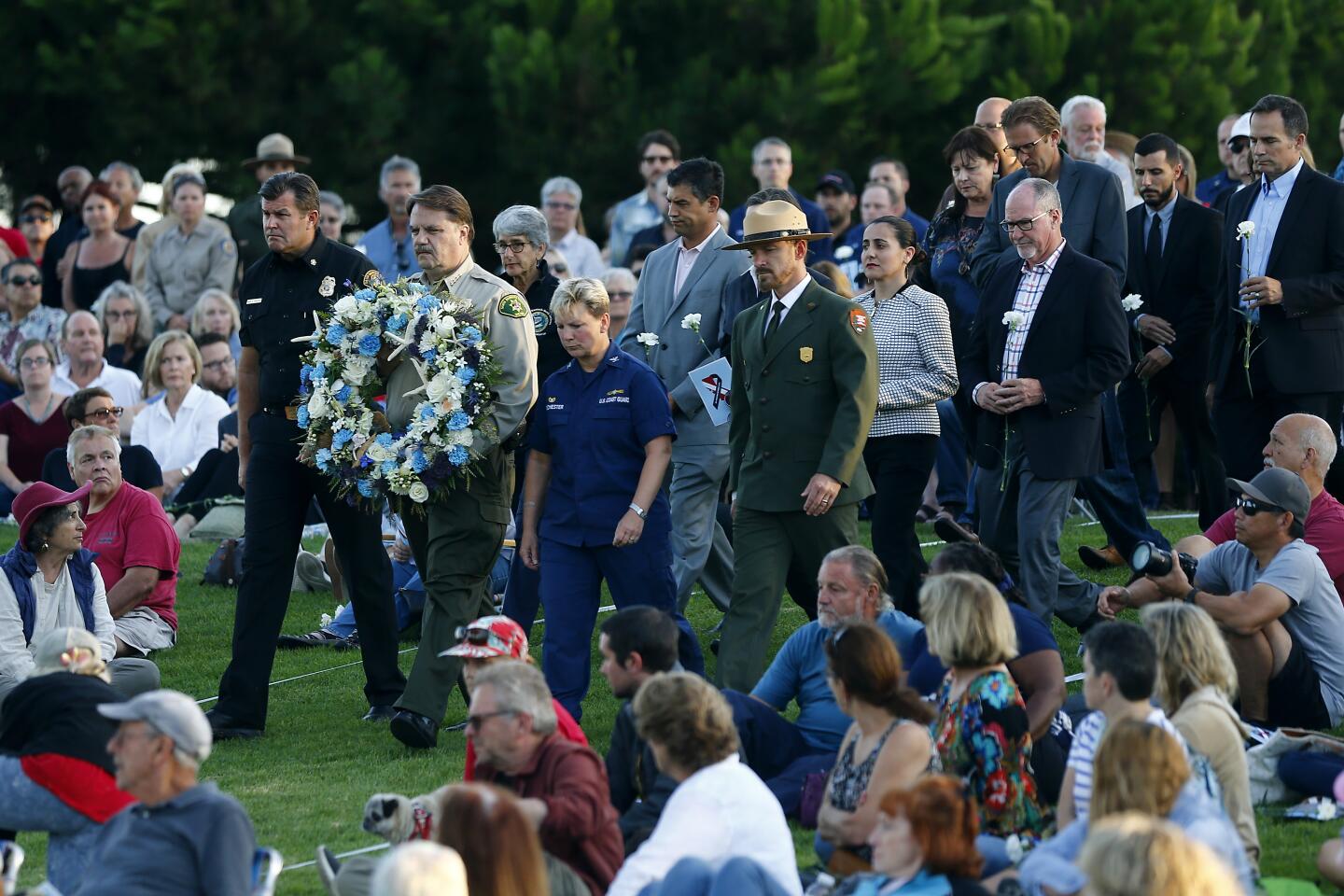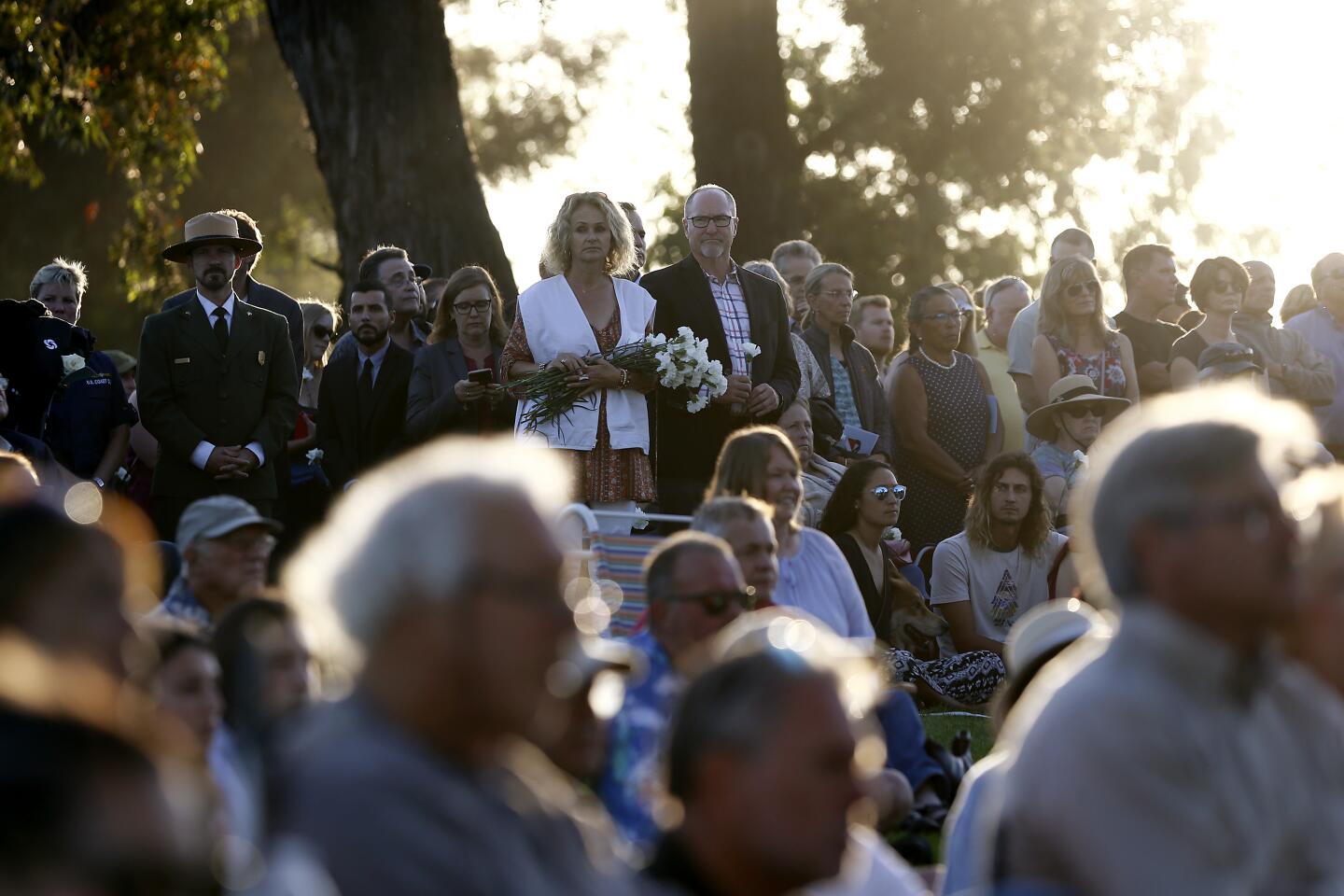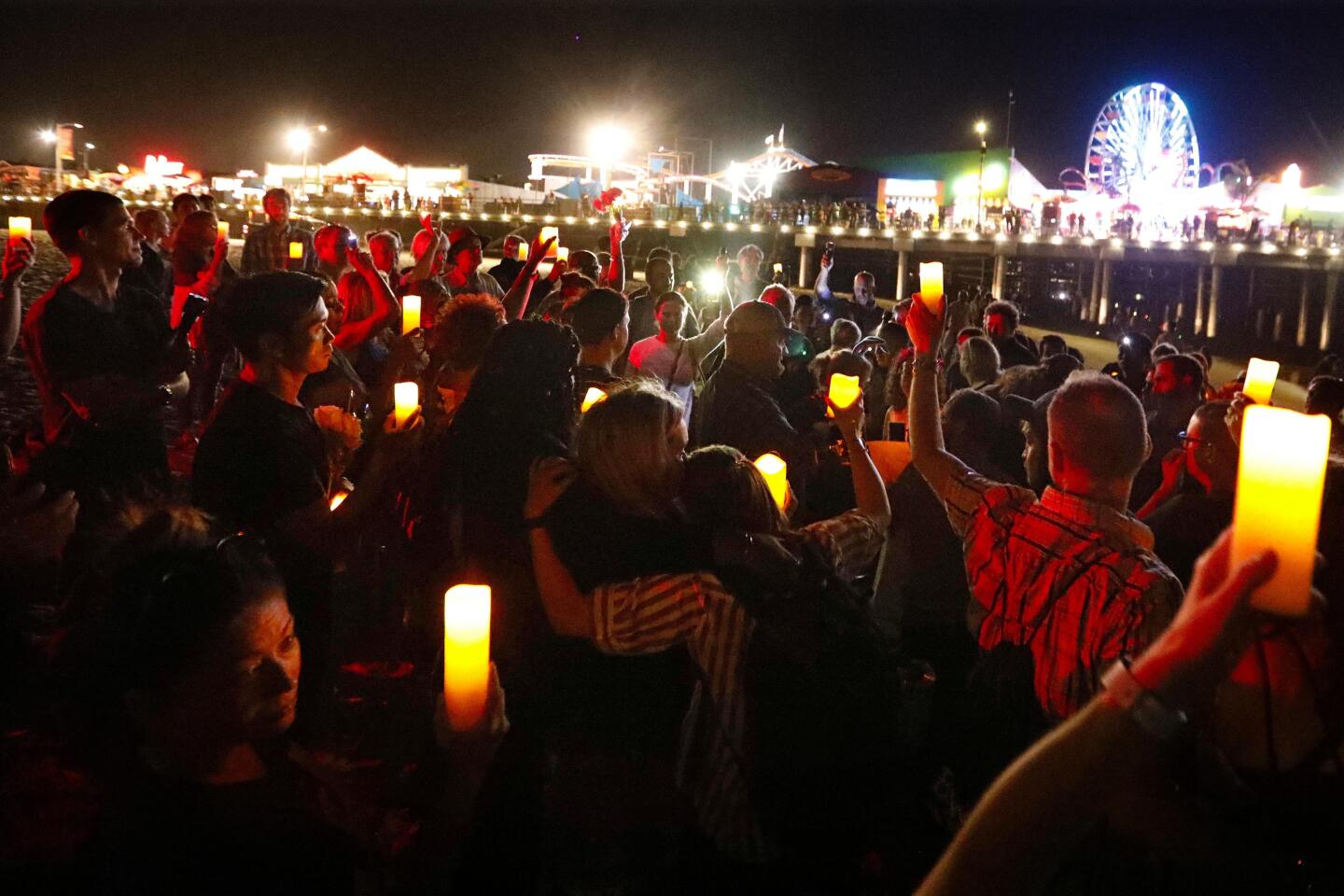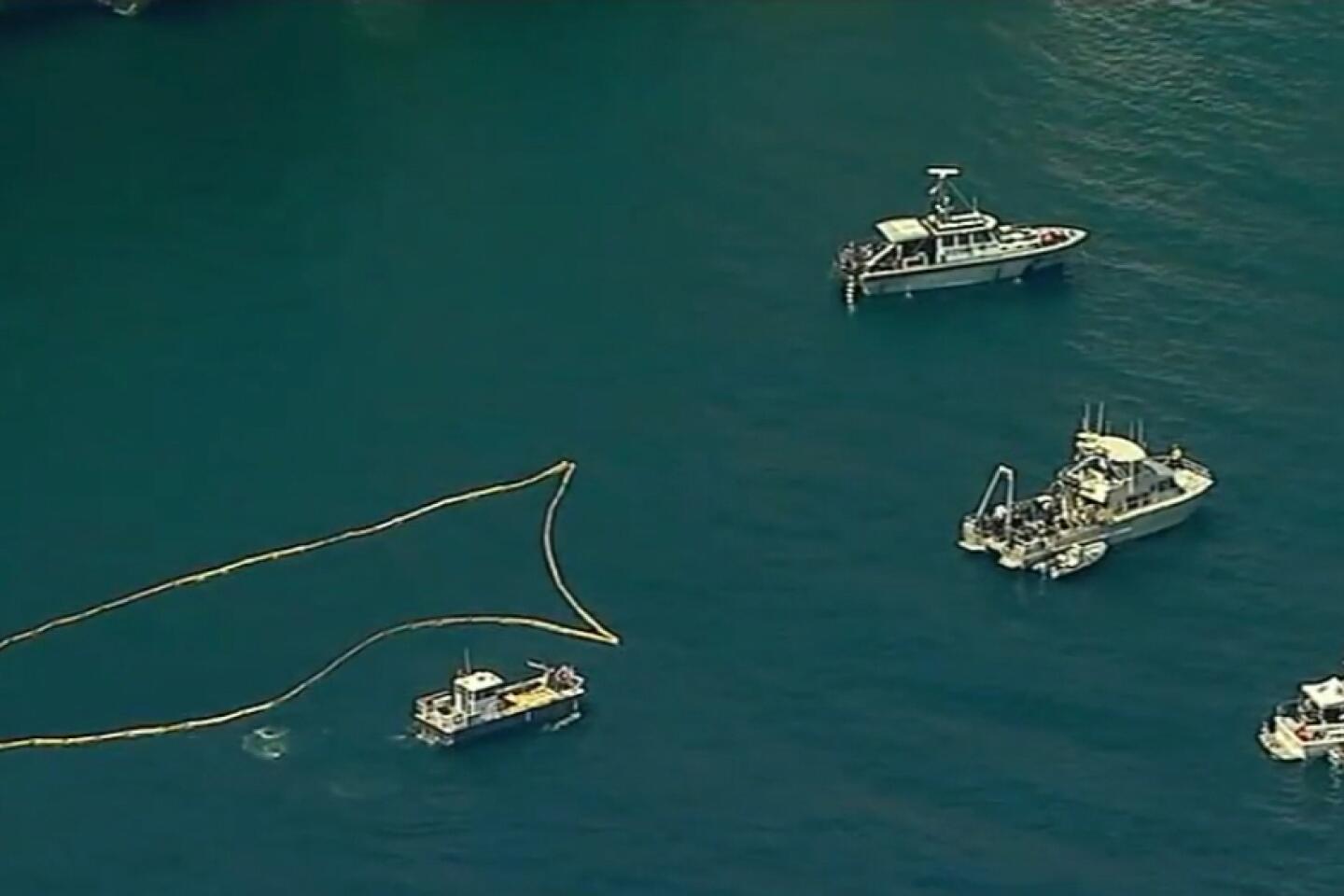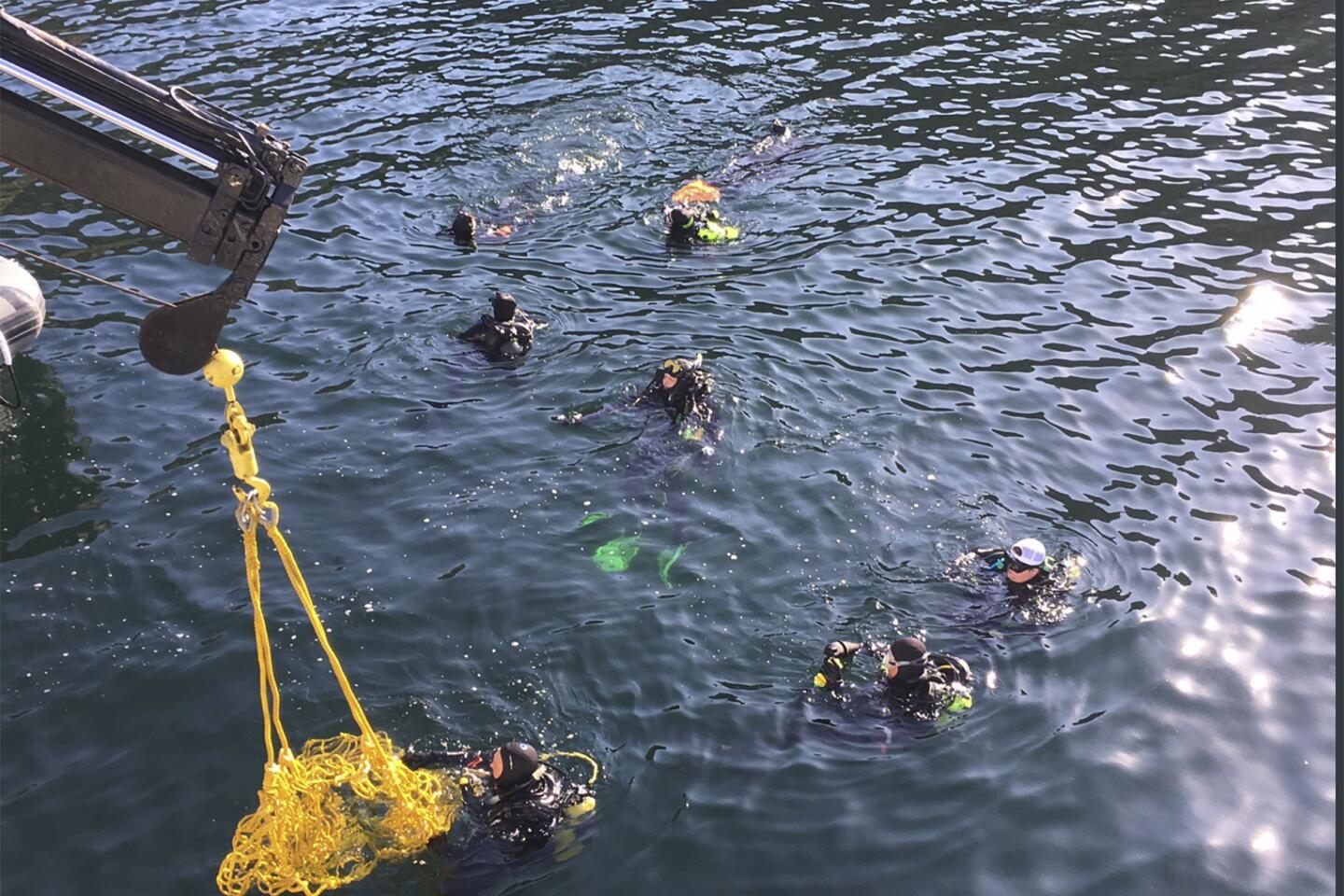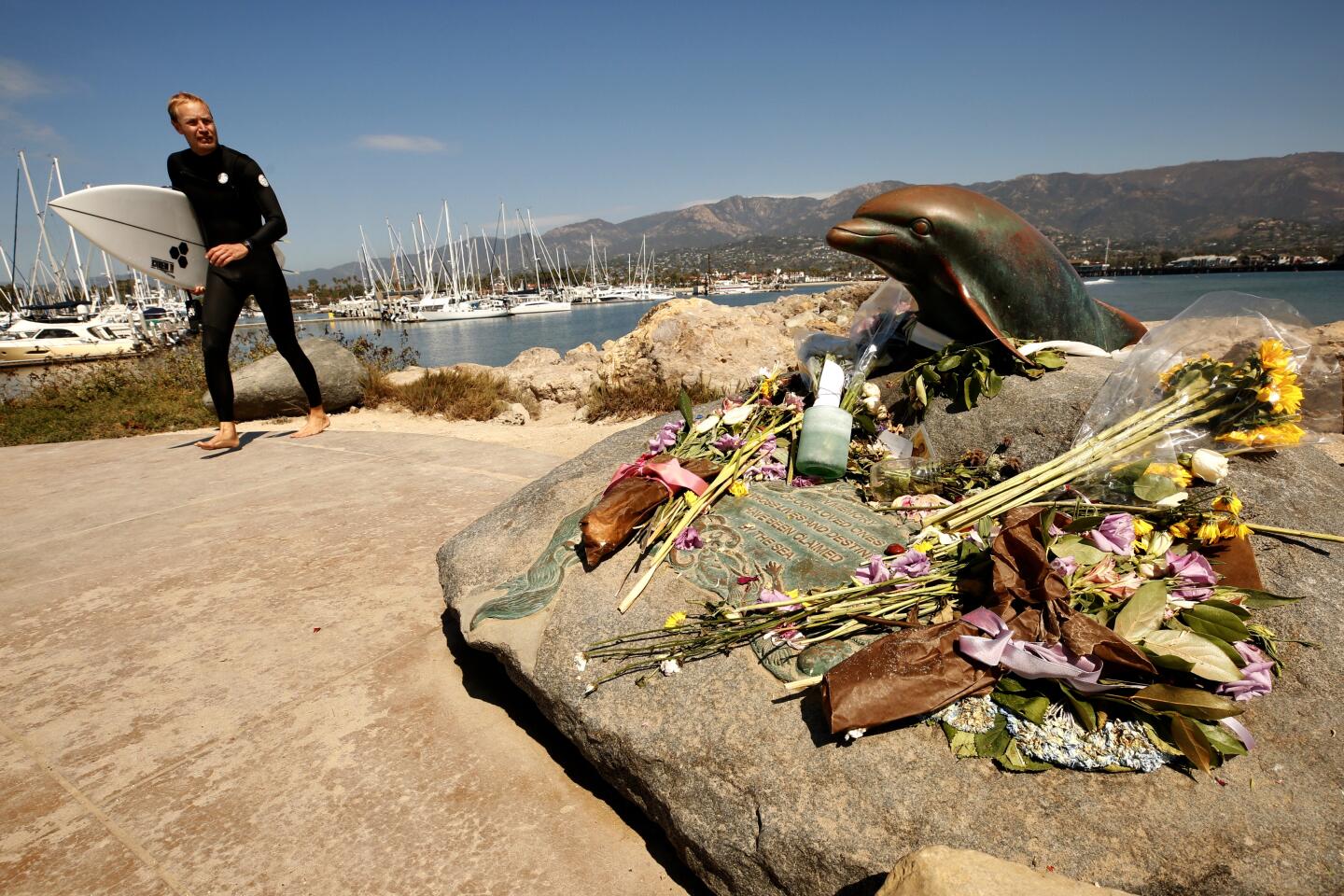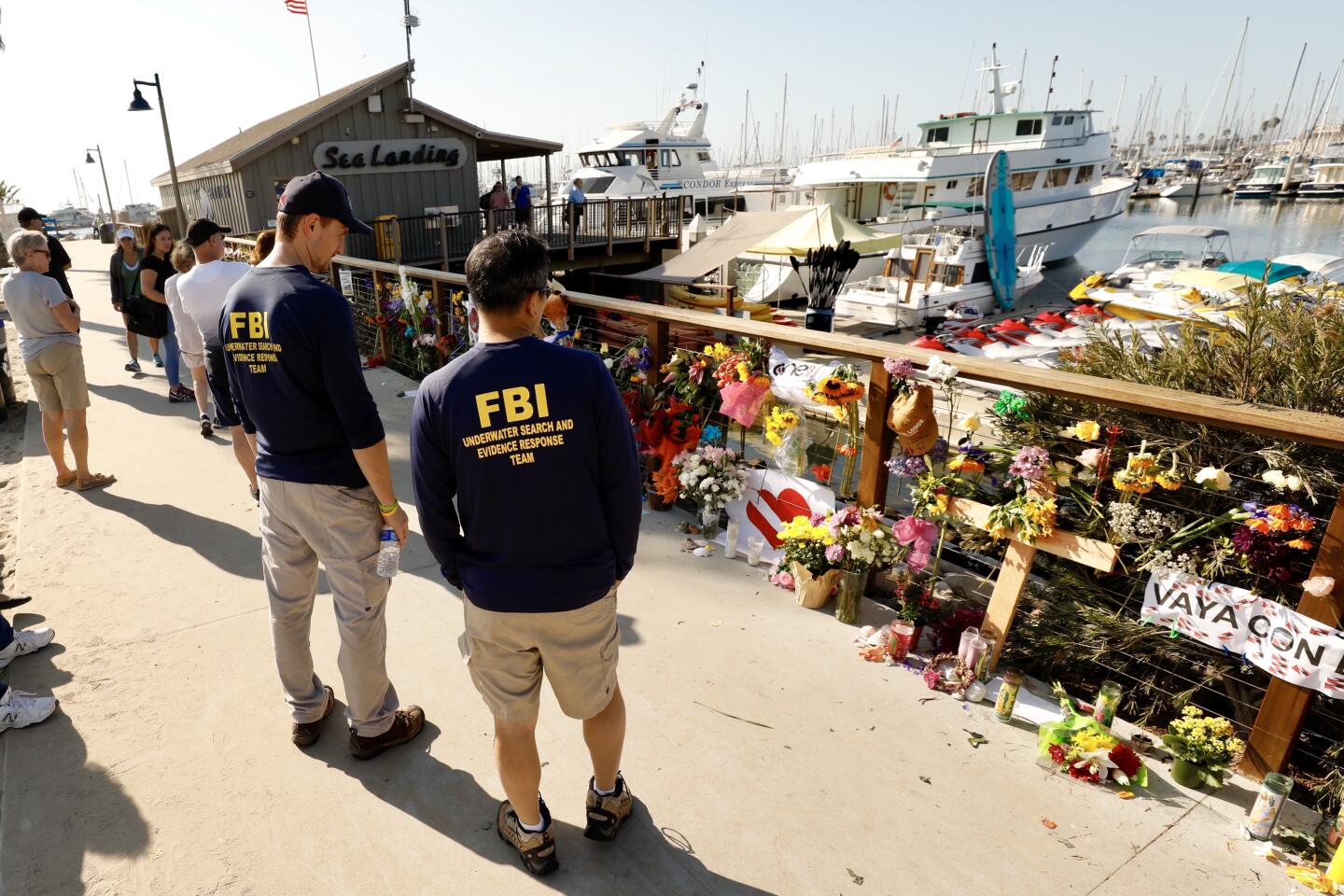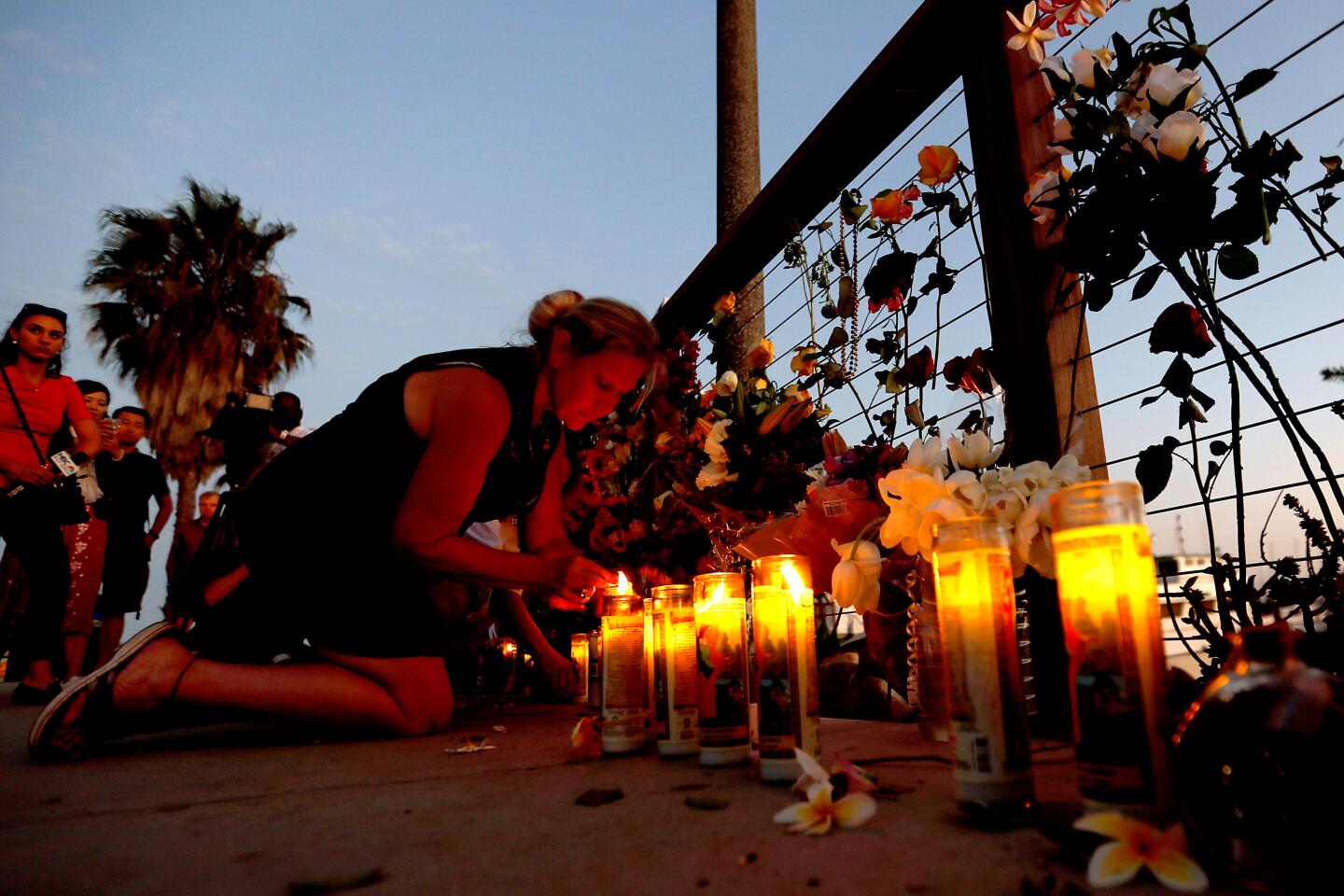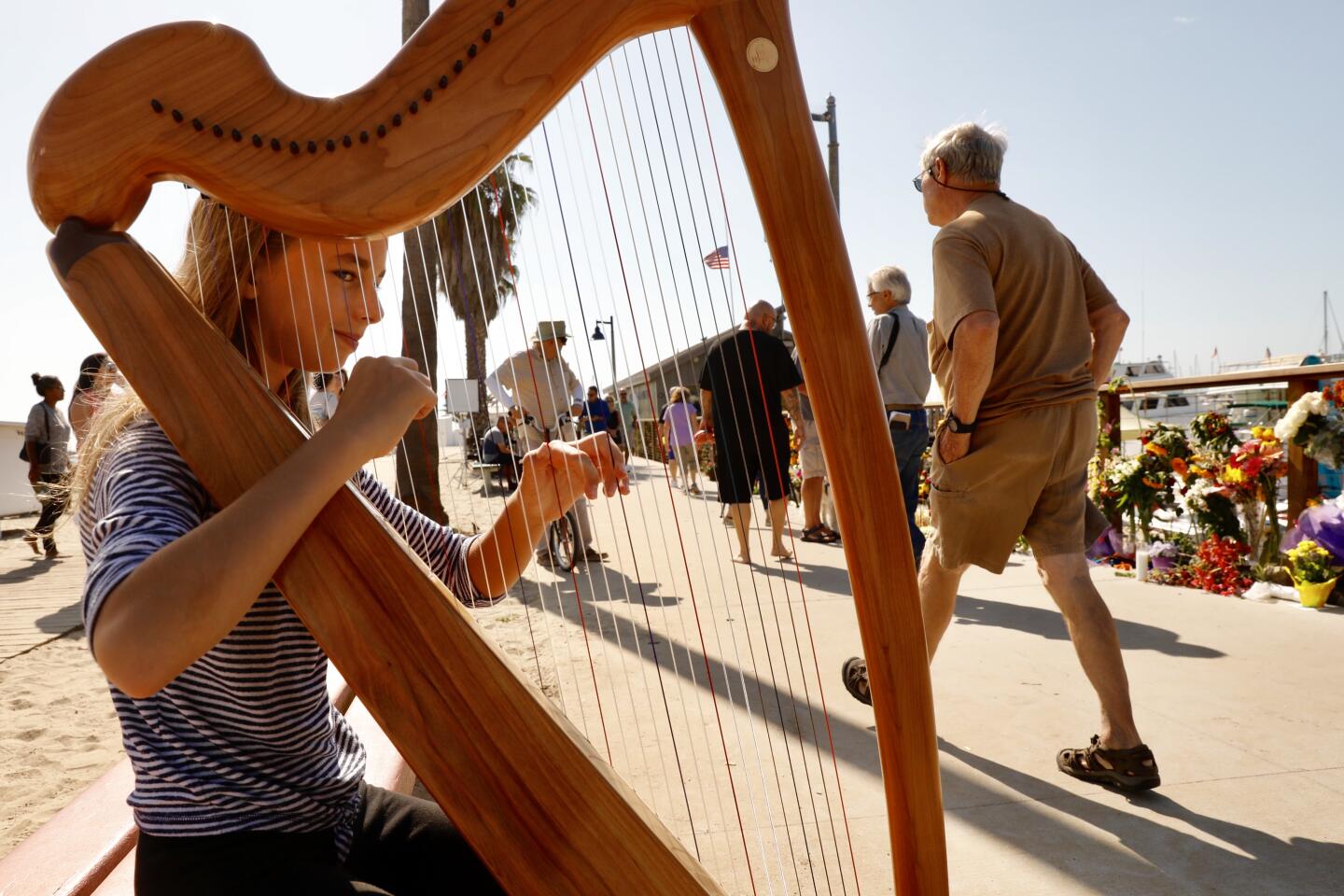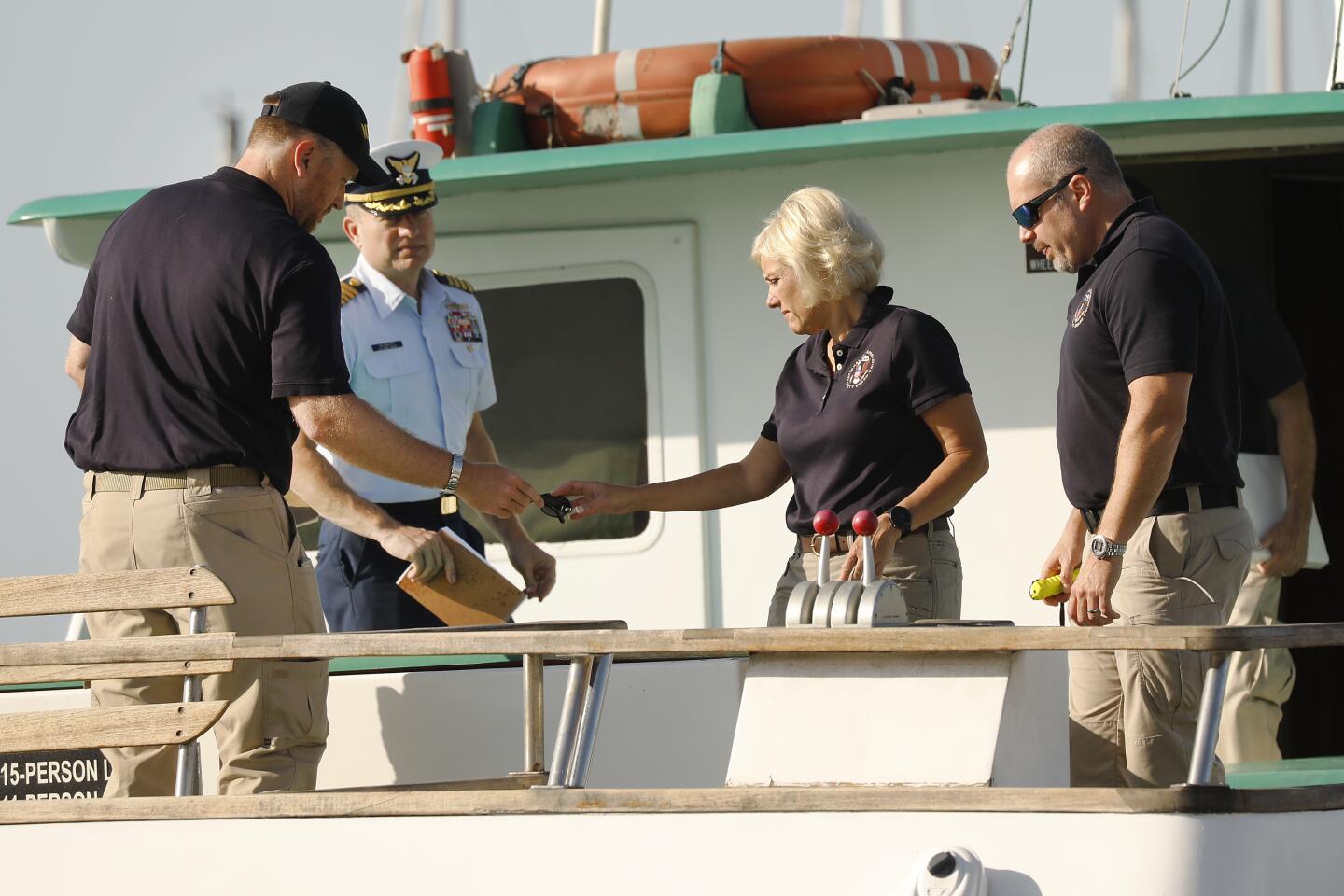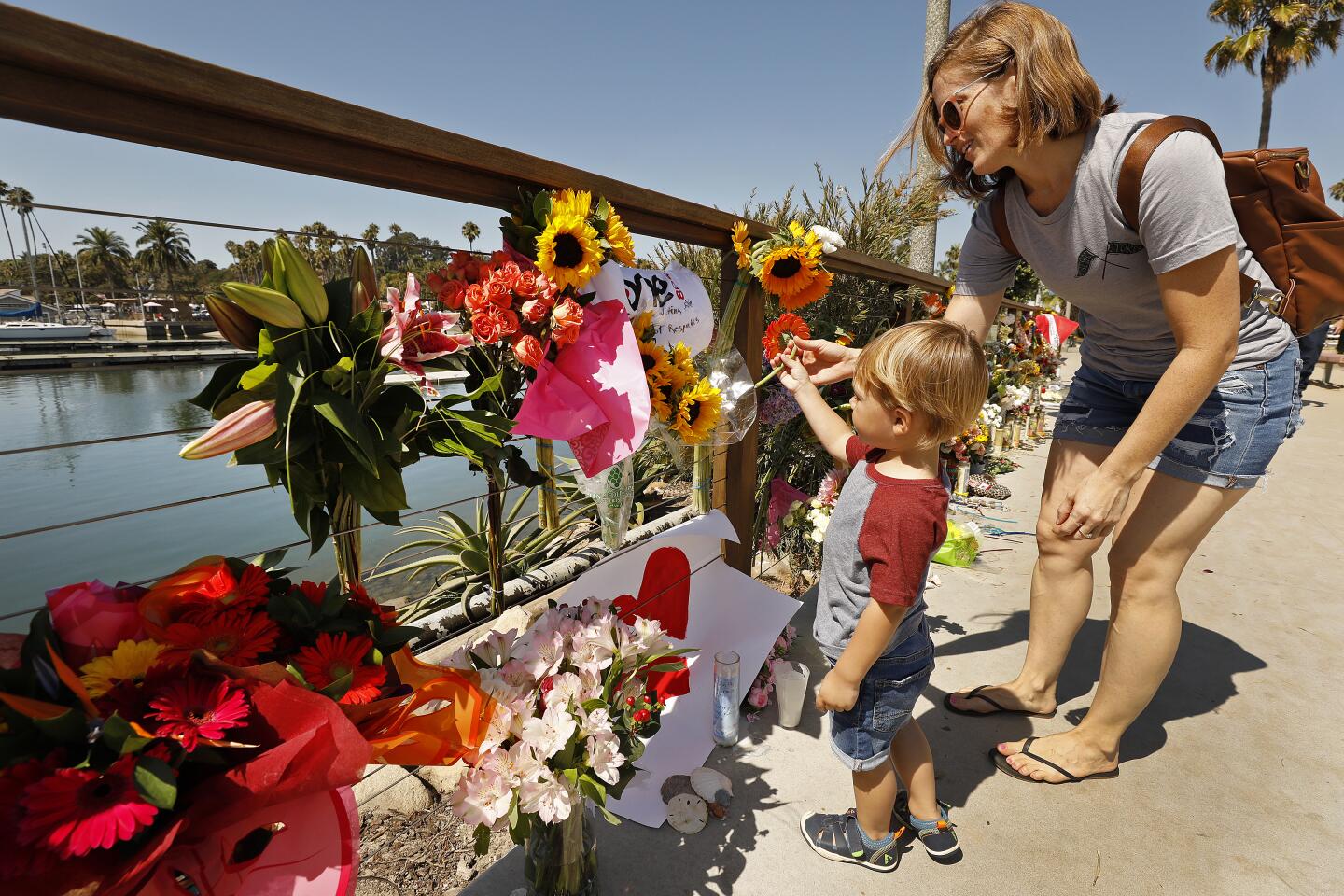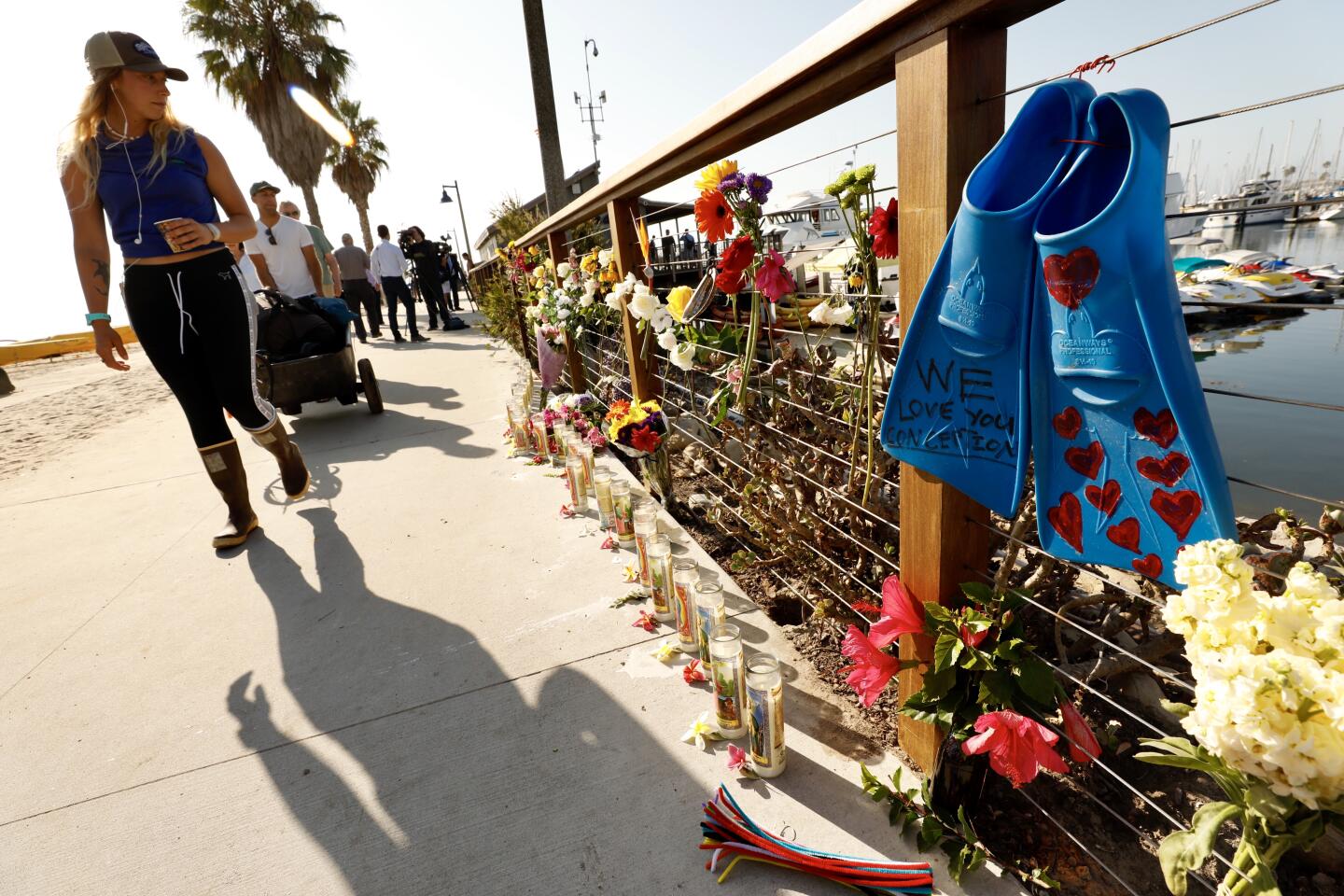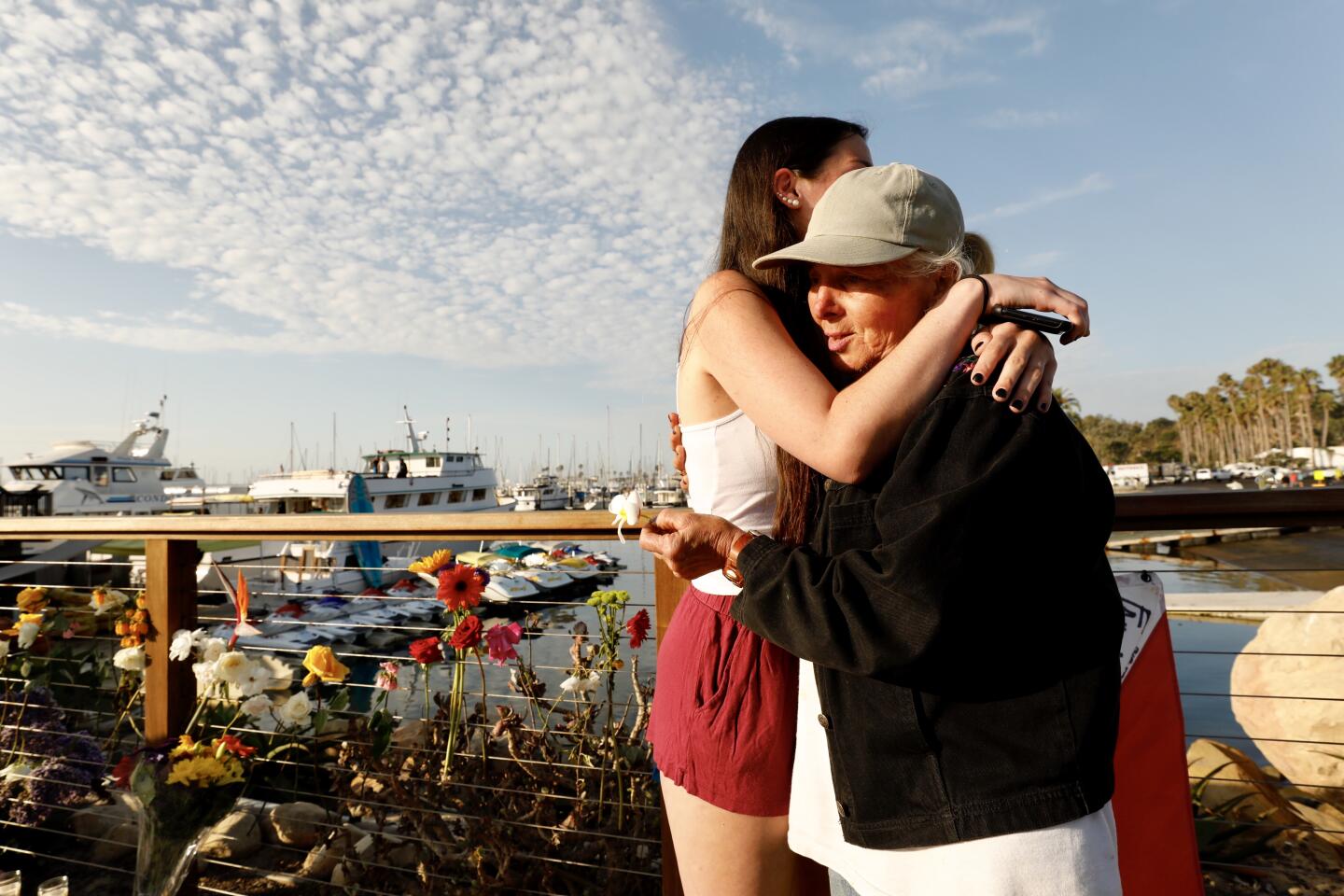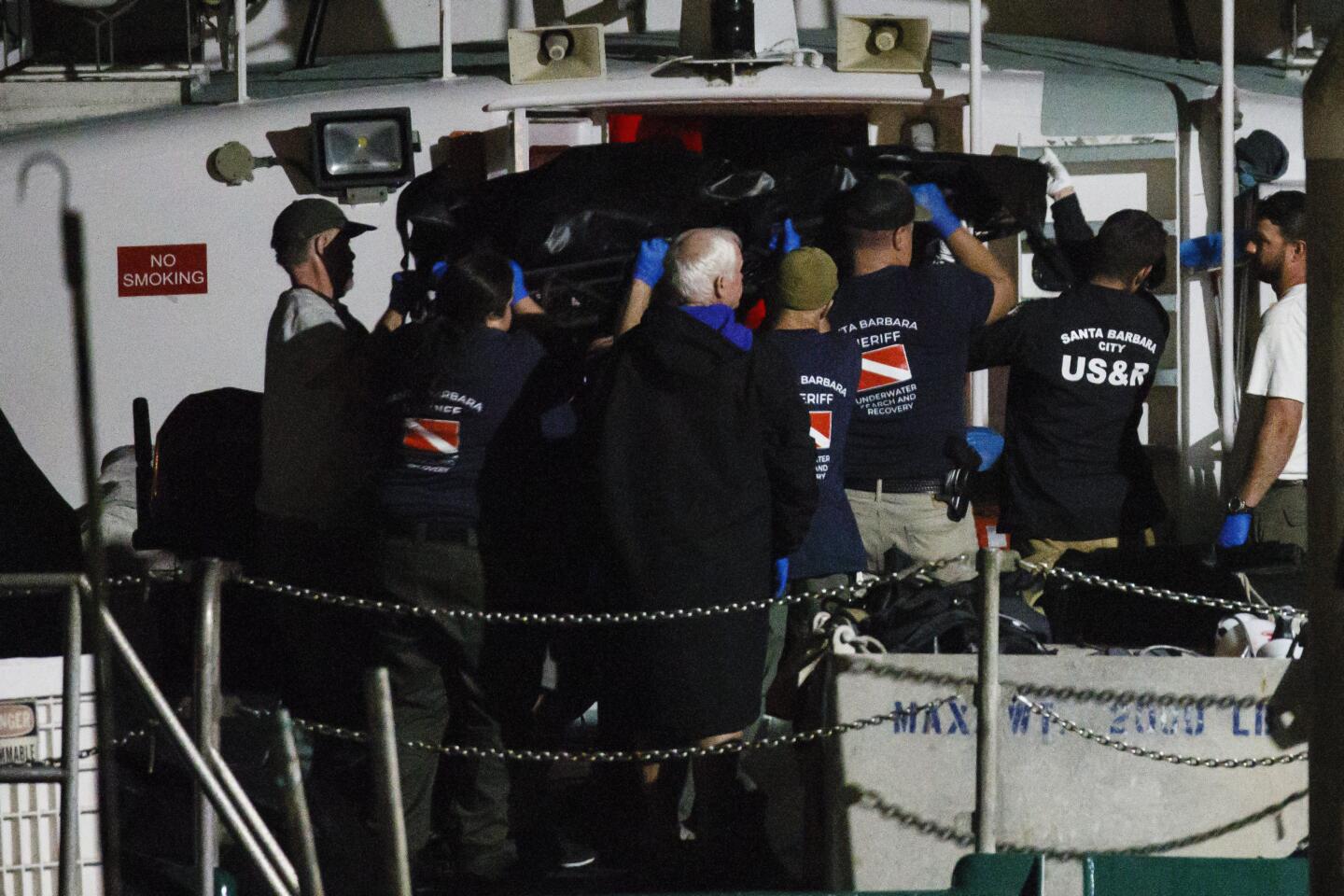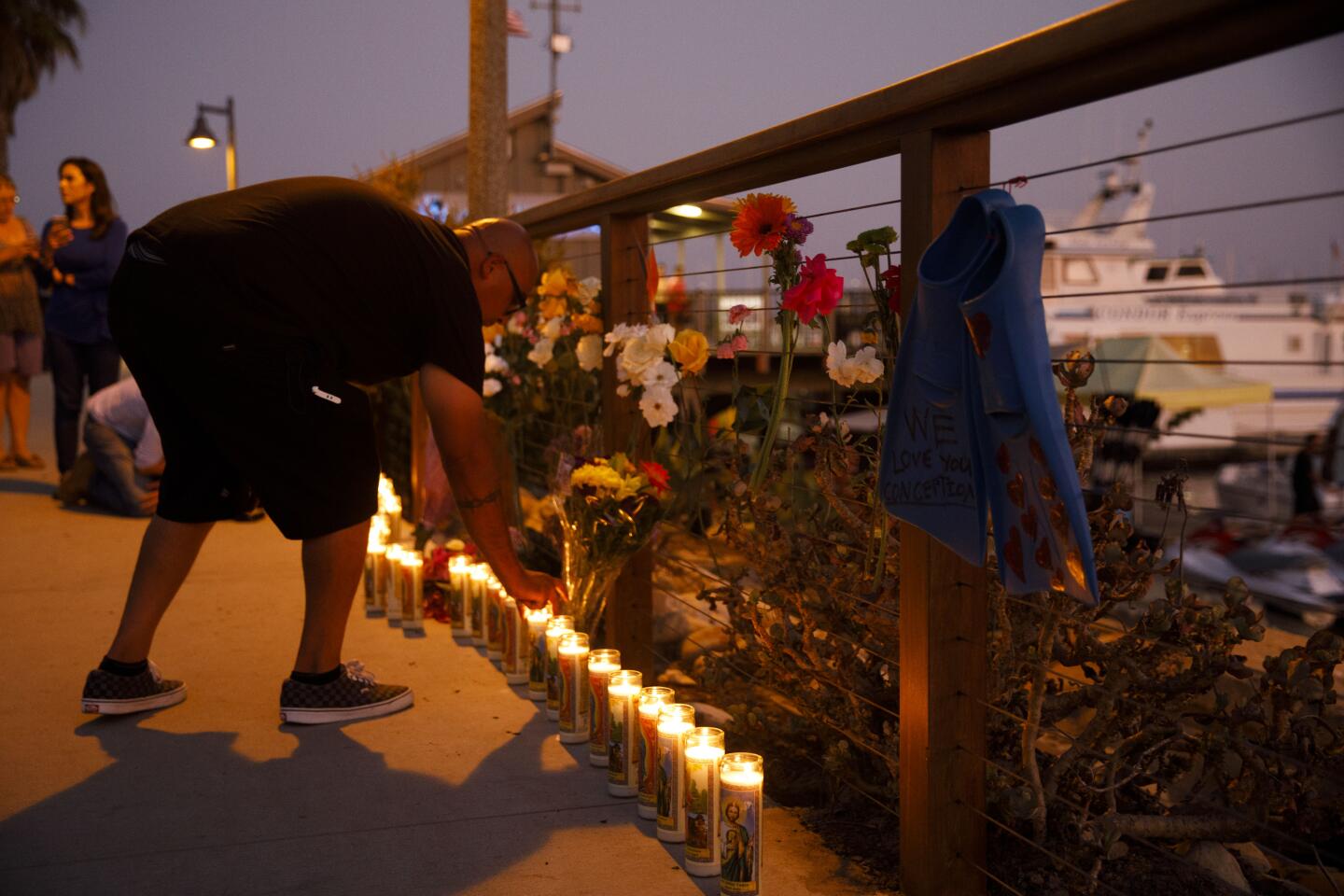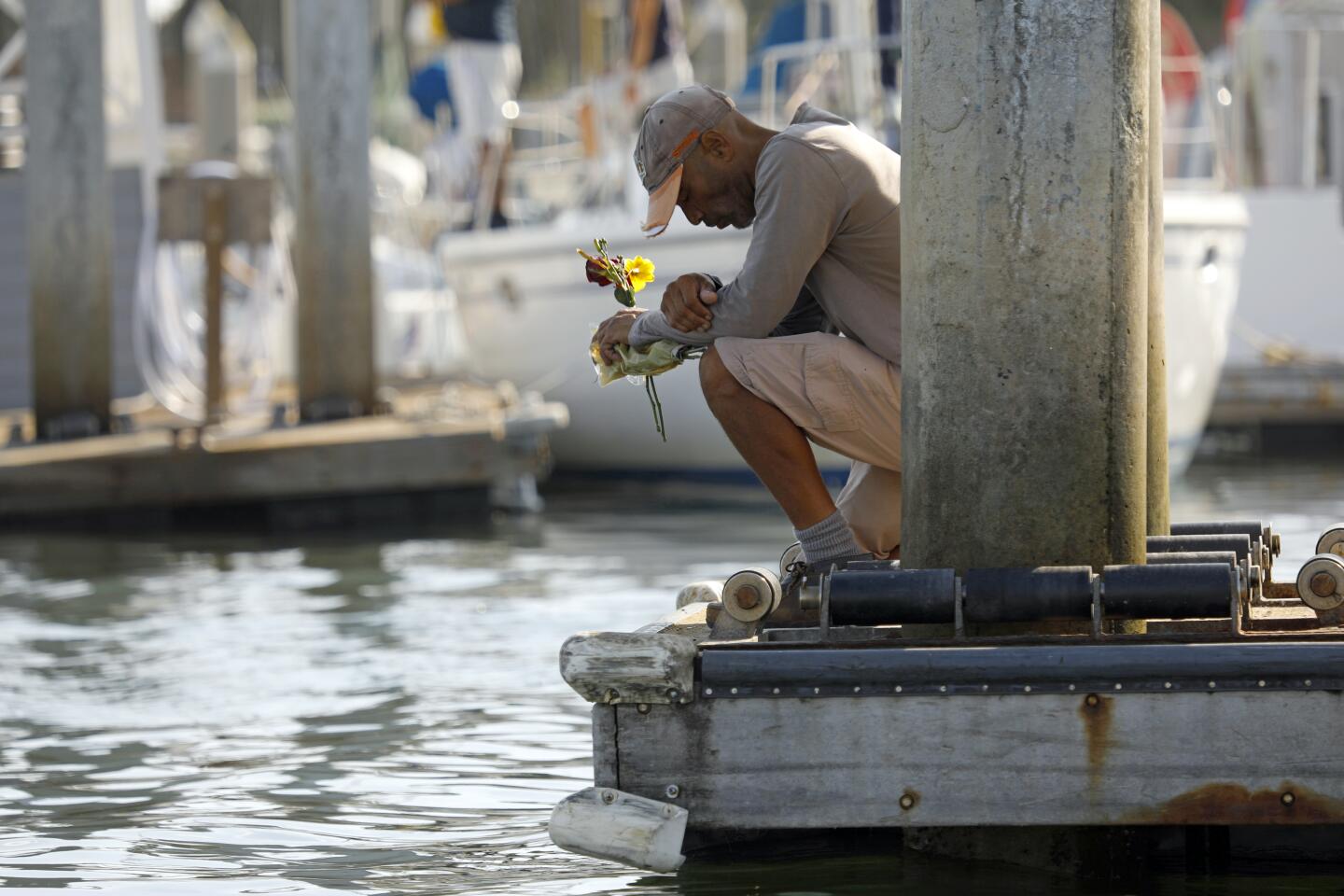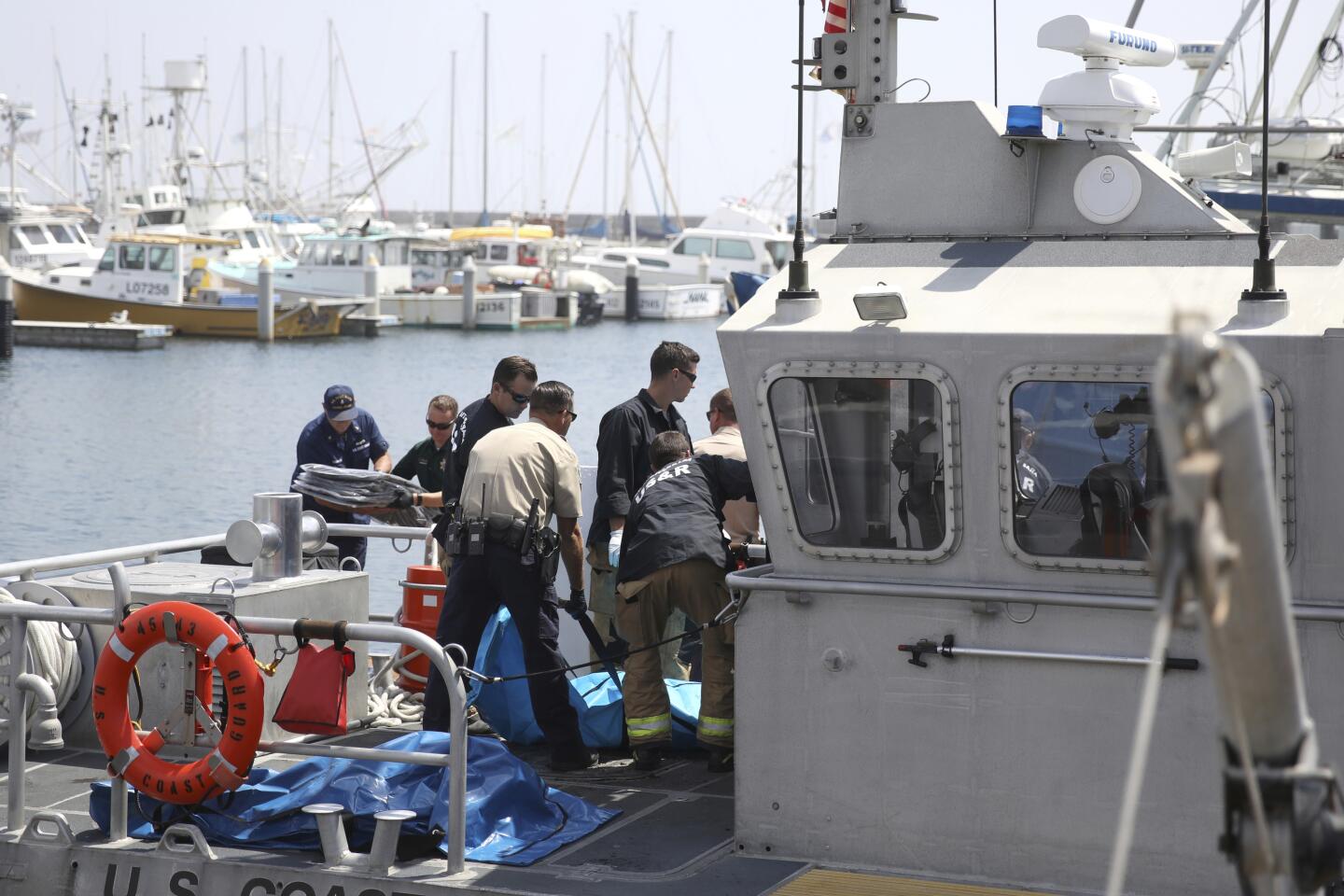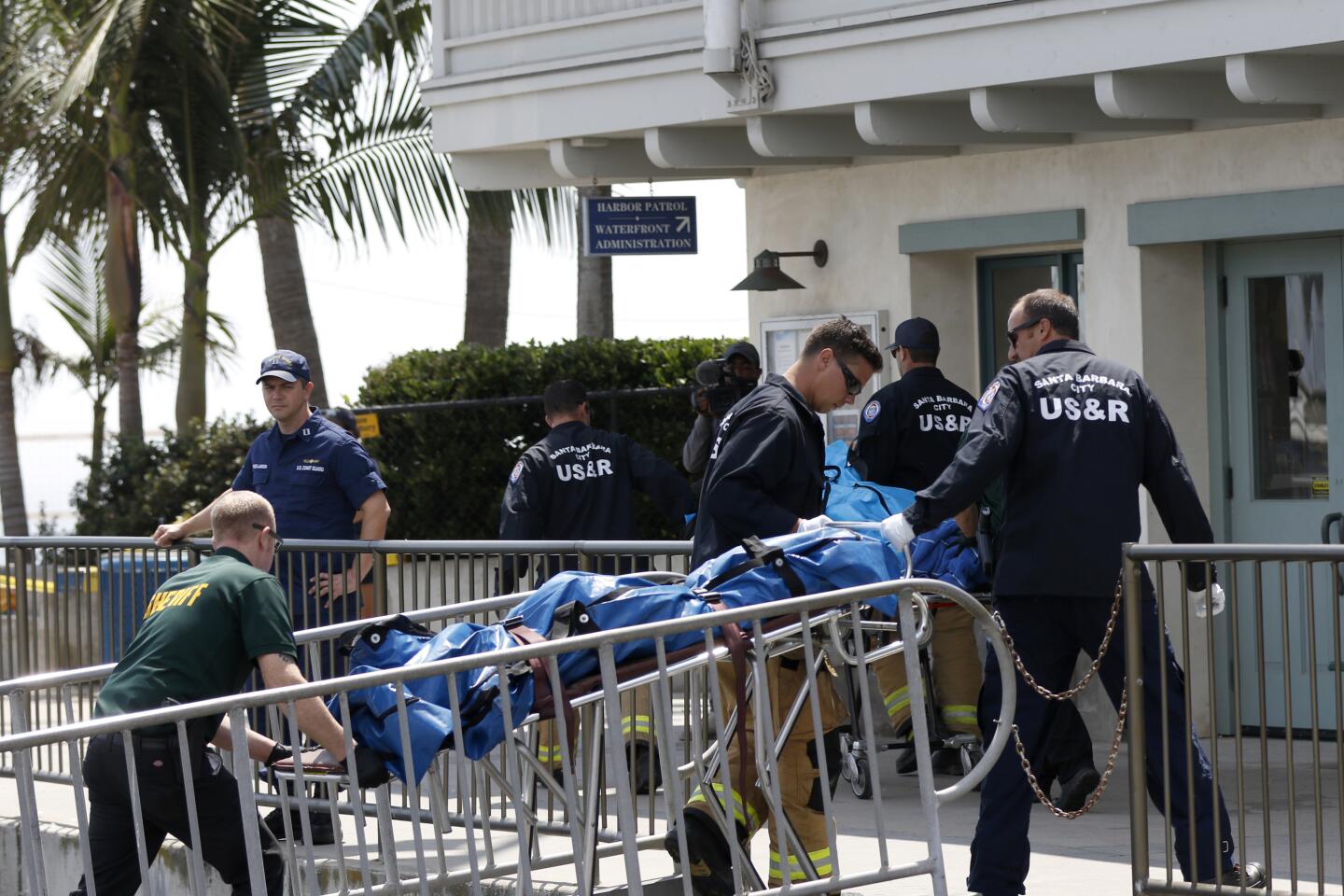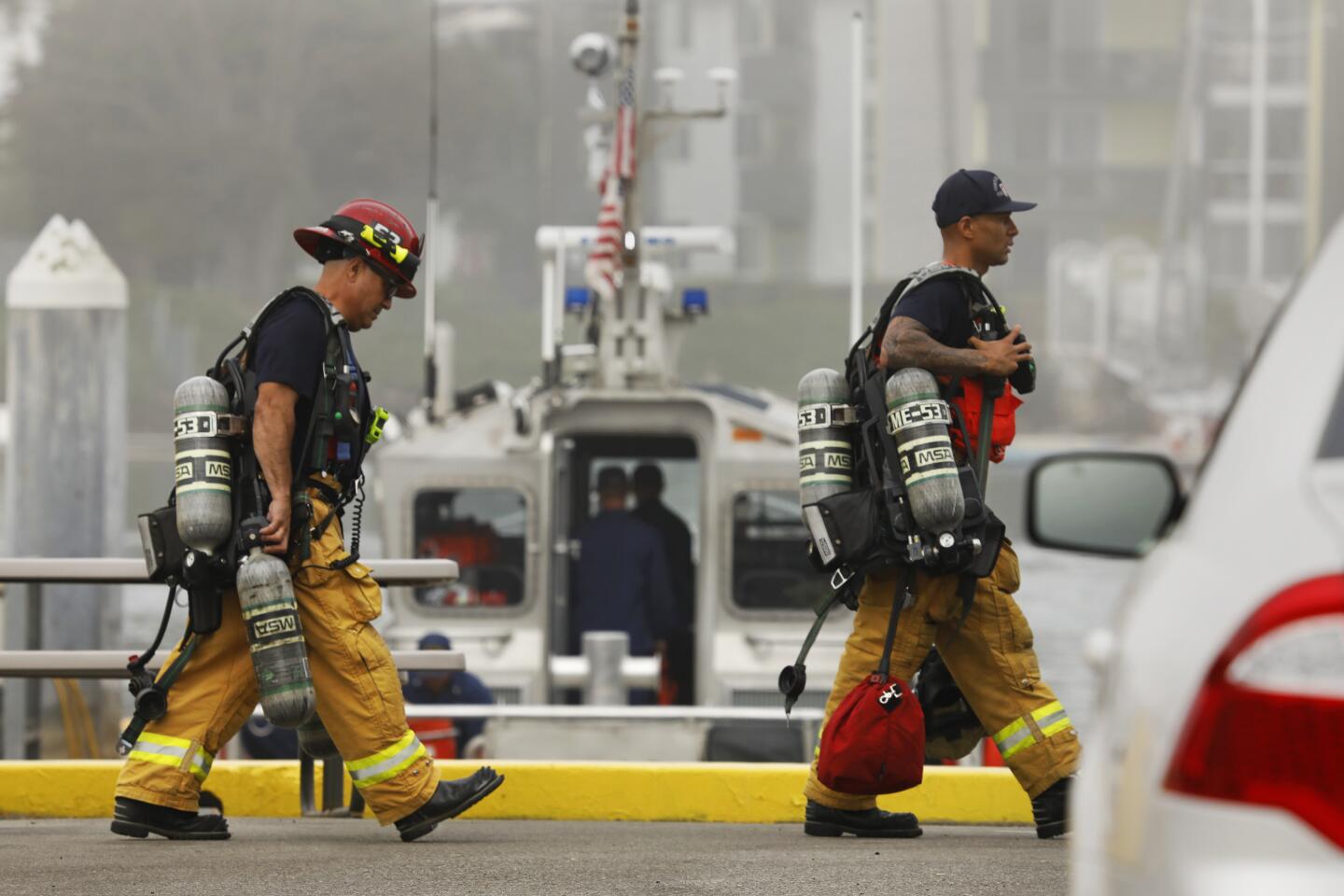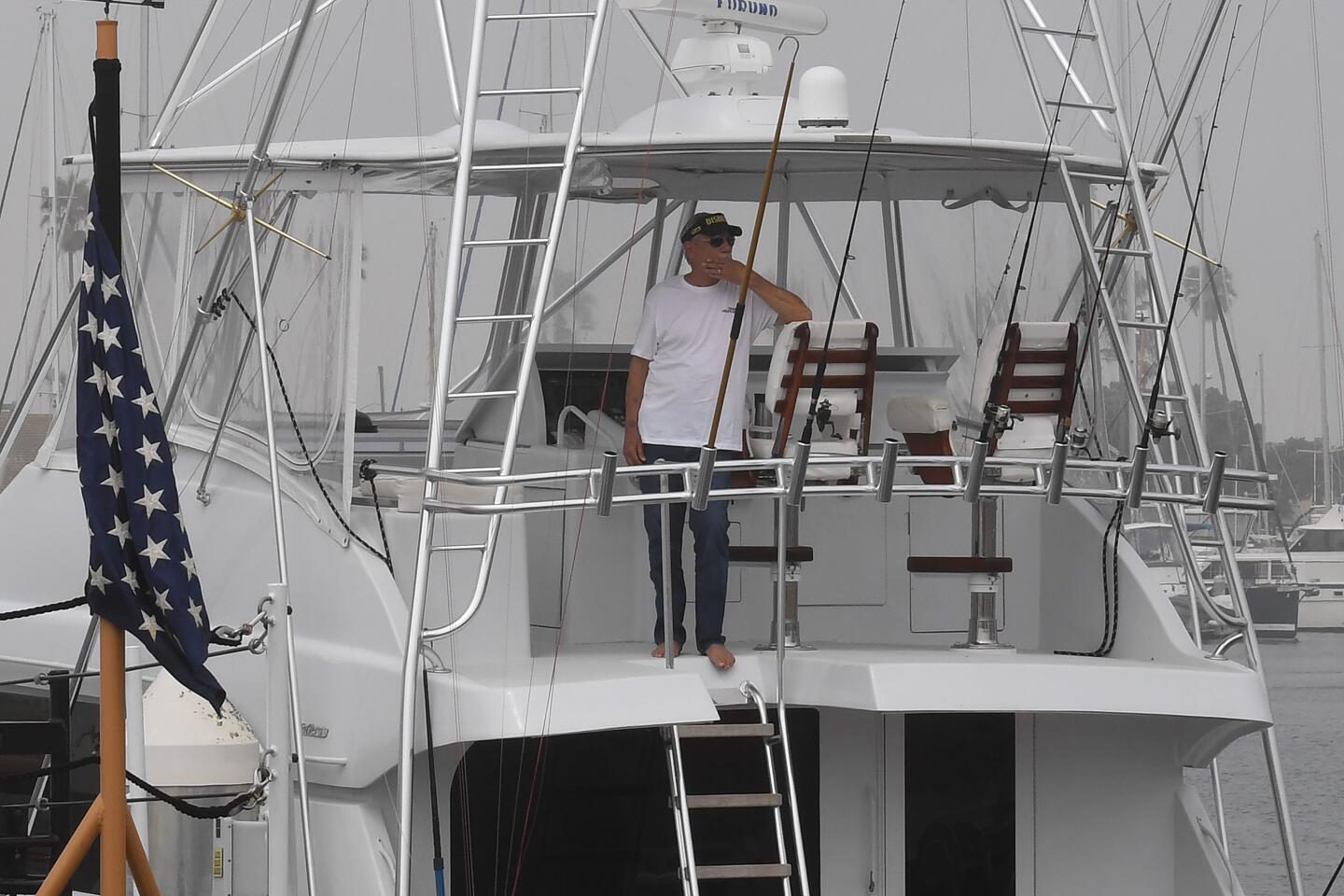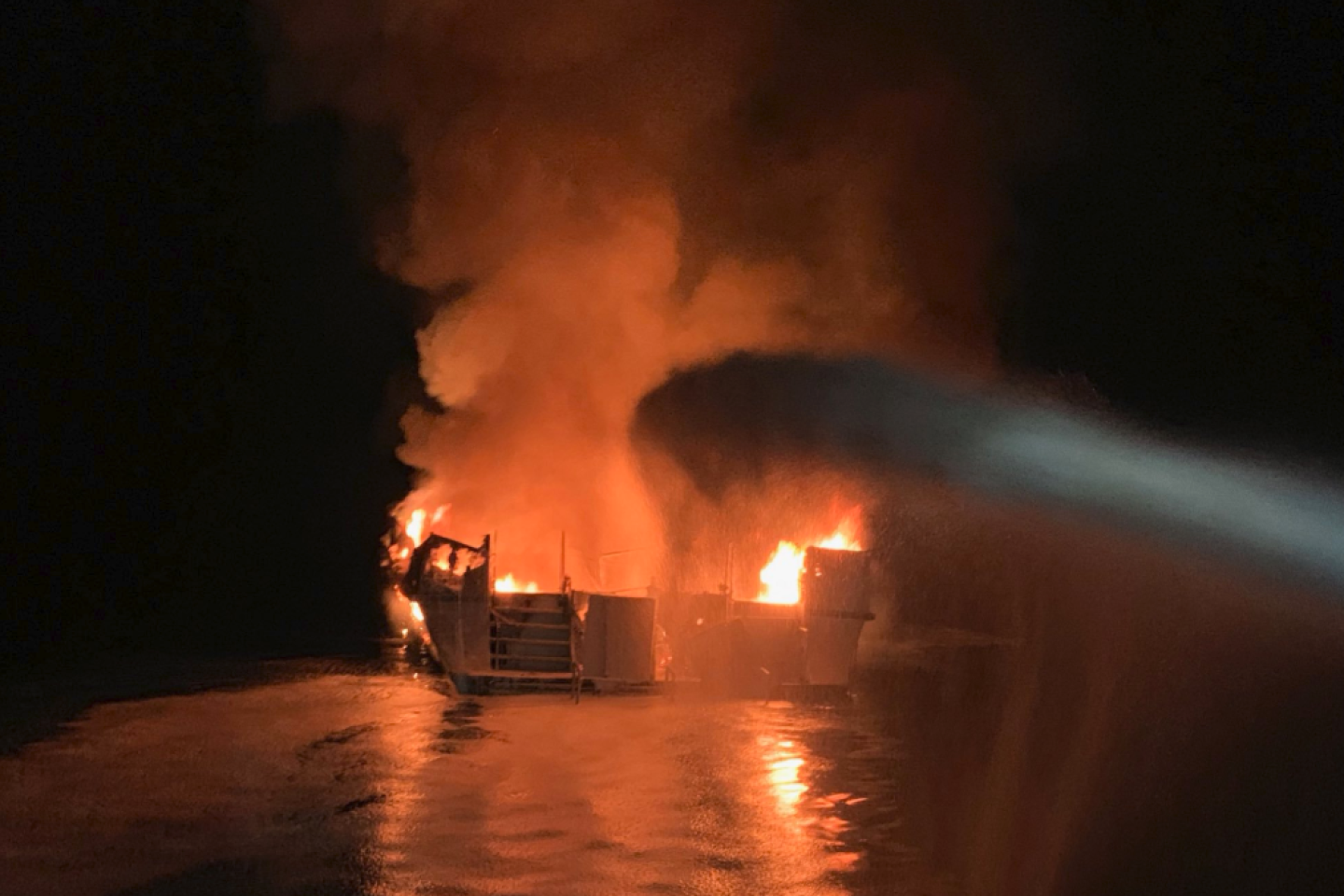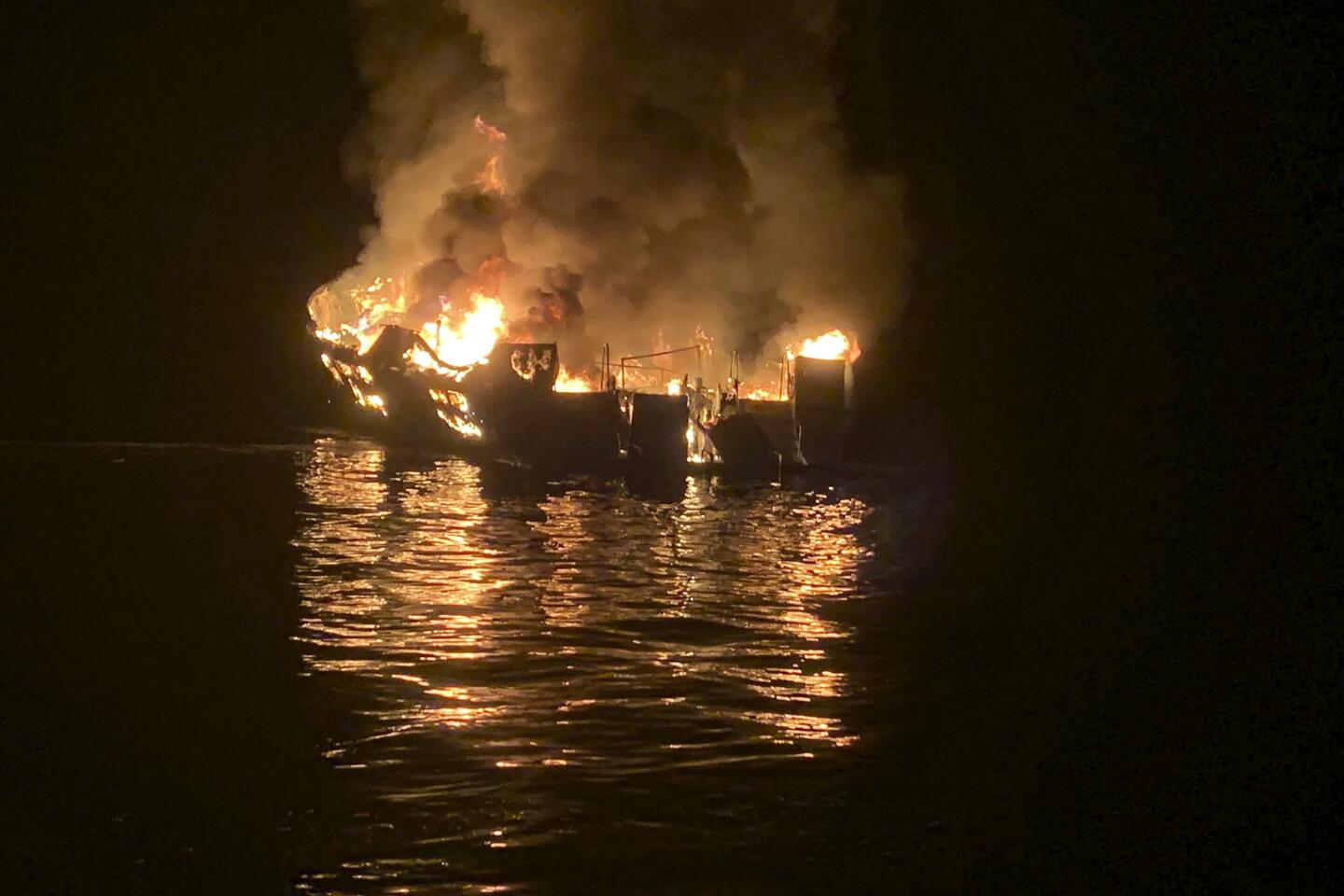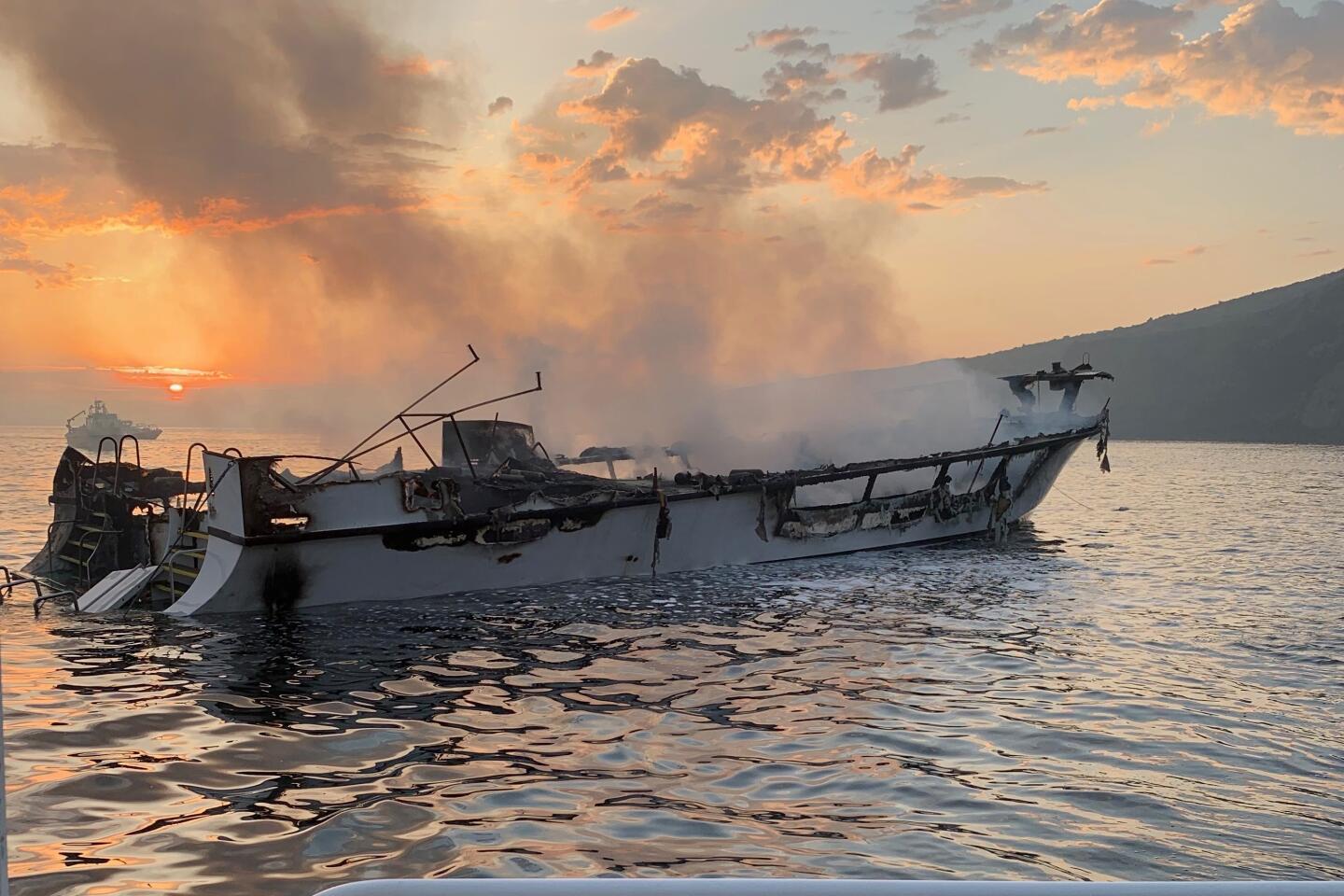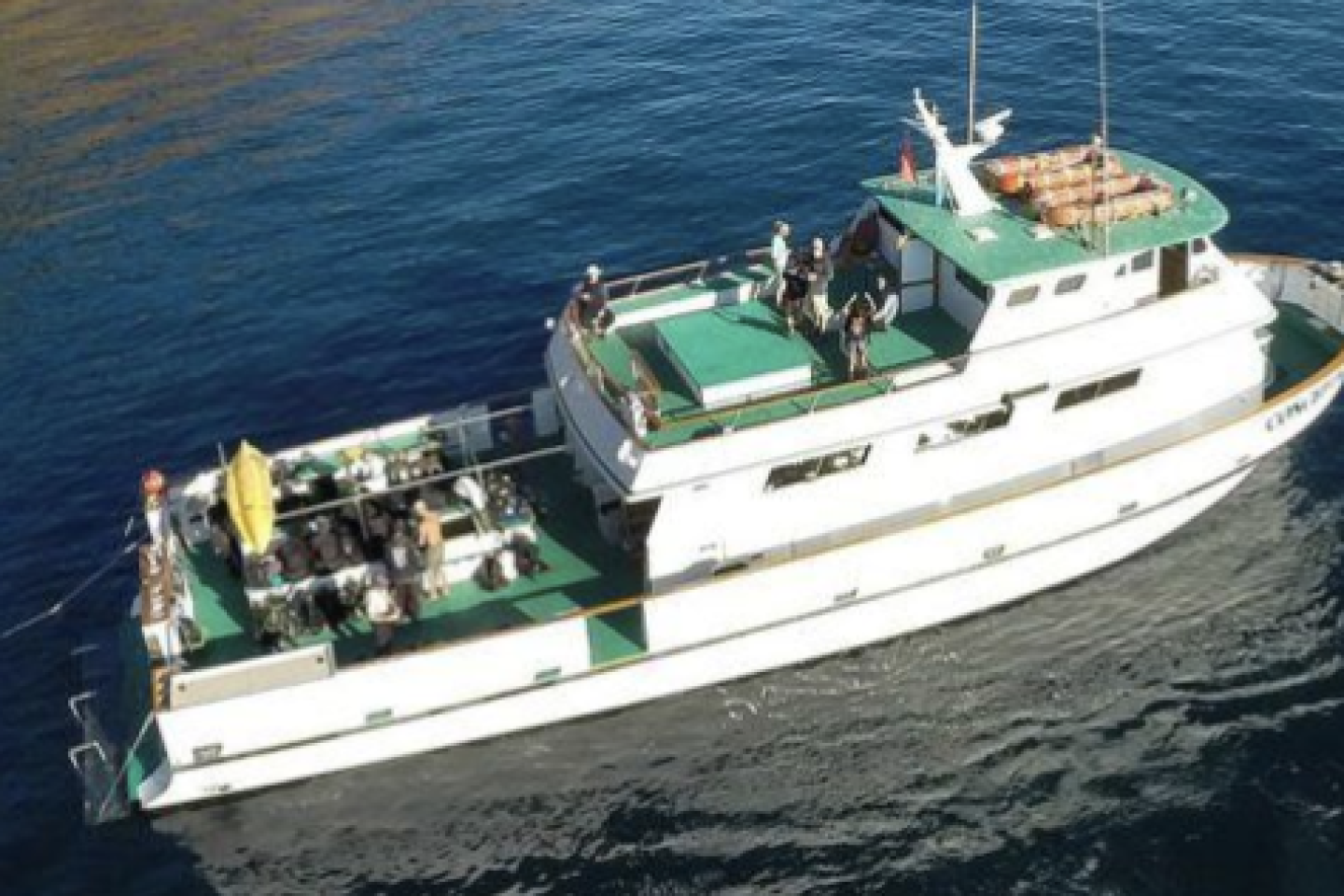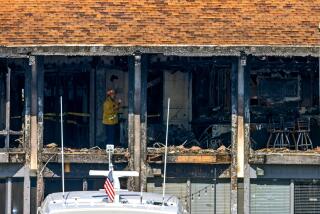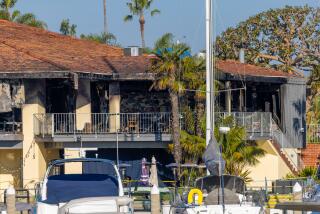Conception crew members were sleeping when boat fire broke out, in violation of rules
All crew members were asleep when the Conception caught fire early on Labor Day, the National Transportation Safety Board said Thursday, a major revelation in the investigation of the worst maritime disaster in modern California history.
The agency’s preliminary report said “at the time of the fire, five crewmembers were asleep in berths behind the wheelhouse, and one crewmember was asleep in the bunkroom.” The boat was required by federal law to have a night watchman who was awake and could alert others to fire and other dangers, said NTSB board member Jennifer Homendy.
U.S. Coast Guard Capt. Monica Rochester said a watchman typically walks through the vessel and checks equipment throughout the night. Coast Guard investigators determined, based on early interviews with the crew, that no one was on watch when the blaze broke out.
The fire tore through the Conception during a weekend diving expedition, trapping passengers and one crew member who were sleeping below deck as the vessel was anchored off Santa Cruz Island. Officials suspect the 34 people who were killed died of smoke inhalation.
Stanley Payne, 79, whose wife’s sister was on board the Conception with several other relatives, took a long pause while he processed the news that all crew members were asleep at the time of the fire.
“We suspected that all along,” he said. “That’s a major breach of security…. If it’s possible, the captain at least ought to be held responsible.”
The Conception’s captain, Jerry Boylan, did not respond to a request for comment Thursday.
John McDevitt, a former assistant fire chief, accredited marine surveyor and chair of a National Fire Protection Assn. committee on boat protection, said smoke alarms in the area where the fire started would have been key to preventing the tragedy.
The NTSB’s preliminary report mentions the presence of two locally sounding smoke detectors in the boat’s bunk room. The report doesn’t specify whether they were working or whetherthere were detectors in other parts of the boat.
“There’s so much left to chance when you depend on a roving watchman,” McDevitt said. “You have the technology, the 50-year-old-plus technology, of a smoke alarm that would have even alerted the roving watchman right away if he wasn’t up and awake.”
The NTSB has released its preliminary report into the Conception boat fire disaster.
The NTSB report provides the most clear narrative yet about what happened aboard the vessel early Labor Day morning. The report states that a crew member sleeping in the wheelhouse was awakened by a noise. When he got up to investigate, he saw a fire at the sun deck, rising from the salon, and alerted the rest of the crew.
The crew members jumped onto the main deck — one man broke his leg in the process — and tried to access the salon and galley to get to the passengers out, but that area was fully engulfed by fire. Overwhelmed by smoke, the crew jumped overboard, according to the report.
Two crew members and the captain swam to the stern, reboarded the vessel, opened the hatch to the engine room and saw no fire, the report said. Access to the salon through the doors near the stern was blocked by fire, so they launched a small skiff and picked up the remaining two crew members in the water. They sought help from a fishing boat, the Grape Escape, that was anchored nearby.
While investigators have not determined what caused the fire aboard the 75-foot vessel, there have been suggestions that it may have erupted at a charging station used by passengers for phones and other electronics in the galley or because of some lithium battery malfunction.
A commercial diving boat caught fire near the shoreline of Santa Cruz Island, Calif., early Monday. Many aboard the boat were believed to be sleeping below deck when the fire broke out in the pre-dawn hours.
Douglas Schwartz, an attorney representing Truth Aquatics, the owners of the Conception, said that based on “current evidence and testimonials,” he does not believe the fire was caused by the operator, the boat or the crew. He said crew members “acted heroically and did all in their power to try and save the lives of the passengers and their fellow crew member.”
Schwartz disputes the NTSB’s assertion that the entire crew was asleep when the fire broke out. Schwartz told CNN he has “witness testimony that seems to contradict the notion that the entire crew was asleep.” The lawyer declined to answer The Times’ questions on the statement, but he told the Associated Press that a crew member “checked on and around the galley area” around 2:30 a.m. Sept. 2.
“We all hope and anticipate new regulations will come as a result of the investigation,” Schwartz said. “We would ask whether safety agencies that have been aware of the dangers of lithium-ion batteries in other modes of transportation have considered applying this knowledge to the charter boating industry.”
Certificate of inspection for the Conception
On Wednesday, the Coast Guard issued a safety bulletin recommending that commercial boat operators nationwide review safety measures, make sure safety equipment is operational and reduce potential hazards from lithium batteries, power strips and extension cords.
Officials are also investigating whether passengers received appropriate safety instructions aboard the vessel.
The Times spoke to more than a dozen people who have recently been on Truth Aquatics boats. Although many remembered the crew as professional and conscientious of safety protocols, some said that the captain’s initial safety briefing was inadequate.
The passengers of the Conception dive boat ended their second day in the waters off the California coast with a nighttime swim, exploring a lush, watery world populated with coral and kelp forests.
The boat’s design has also come under scrutiny, particularly whether the the escape hatch located in the bunk room provided an adequate route for people to leave the boat during an emergency. From the bunk room, there were two ways out to the deck — a staircase on one side and the emergency hatch on the other. Both led to the galley area.
Homendy told The Times last week that she was “taken aback” by the size of the emergency hatch — which measures roughly 2 feet wide — when she toured the Vision, a sister vessel that is similar in size and layout to the Conception.
Investigators plan to examine current regulations regarding vessels similar to the Conception that were built the same year and conduct similar operations; check early-warning and smoke-detection and alarm systems; evaluate evacuation routes and staff training; and verify current company policies and procedures, according to the report.
More to Read
Start your day right
Sign up for Essential California for news, features and recommendations from the L.A. Times and beyond in your inbox six days a week.
You may occasionally receive promotional content from the Los Angeles Times.
